UV Water Purification Systems

Premium Ultraviolet System for Home or Cottage
Bacteria
Cysts (Cryptosporidium, Giardia)
Viruses
- Makes water from lake, river or well safe to drink
- Whole house treatment system
- Non-chemical natural method to disinfect water
- 24/7 operation
- Uses very little power (less than 50W)
- Available in 3 sizes: 5, 8 and 12 GPM
- Pre-filter sold separately (Incl. with model R830F)
- 7 year limited warranty
-
Click retailer logo to buy online or in store at:
Seller Model R519 (5GPM) Model R830 (8 GPM) Model R1245 (12 GPM) 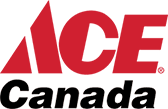



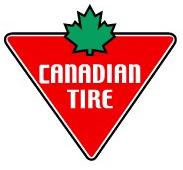

















Also available in store at the following retailers:

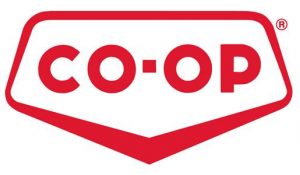

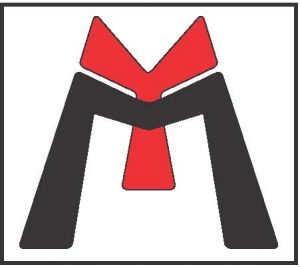
Not all models are available at all locations/retailers. If you have questions regarding availability of a particular model, please call your local store or Rainfresh support.
-
MODELS AND SIZING
MODEL Suitable for homes with up to Max rated water flow rate Inlet/outlet connections R519 Max 2 bathrooms 5 GPM (19 lpm) 3/4″ Male NPT R830 2 – Max 3.5 bathrooms 8 GPM (30 lpm) R830F* 2 – Max 3.5 bathrooms 8 GPM (30 lpm) R1245 3.5 – Max 5 bathrooms 12 GPM (45 lpm) - * Includes pre-filter – Exclusively available at Canadian Tire
- Water Temperature Range : 4°C to 37°C (39 to 100°F)
- Feed Water Pressure : 10 to 100 psi (68.9 to 689 kPa; 0.68 – 6.89 bar)
If your water comes from a private well or lake and you worry about the microbiological safety of the water, Rainfresh UV Water Disinfection system could be the solution that you have been looking for.
Rainfresh UV system disinfects water by using the natural, non-chemical disinfection properties of ultraviolet light (UV for short). UV light inactivates bacteria, coliform bacteria (e.g. E. coli), viruses, parasitic cysts and other microorganisms using a germicidal wavelength of 254 nm & a UV dose of >40 mJ/cm², making the water safe to drink from virtually any potable source.
UV disinfection is used by many municipalities across the world including North America for primary disinfection of water. It has multiple advantages over conventional chemical disinfection methods, such as:
- UV systems are highly effective against a broad range of microorganisms including bacteria, viruses & parasitic cysts such as Cryptosporidium & Giardia
- UV systems do not alter the water chemistry and thus there is no affect on taste, odour or colour of the water
- UV systems do not create disinfection byproducts such as Trihalomethanes (THMs ) which are suspected carcinogens.
- UV systems are easy to operate and require very little maintenance as compared to chemical disinfection methods
Rainfresh UV systems are made in CANADA and manufactured to the highest performance and quality standards.
BENEFITS
- Makes ALL the water in the home safe to drink including bathrooms and showers
- Natural non-chemical method of treatment so you don’t have to deal with chemicals
- Very little maintenance required
- Can be used on any water source such as well, lake, river or even municipally treated (see feed water quality specifications below)
FEATURES
Rainfresh UV system is ideal for homes and cottages and available in 3 sizes – 5 US GPM, 8 US GPM & 12 US GPM to suit homes of various sizes
- All models independently tested for > 40 mJ/cm2 UV dose at end of lamp life (NSF/ANSI 55A dose requirement) at rated flow
- Audible alarm and visual LED lamp expiry indicator (with 7-day override feature) to show end of lamp life – 9000 hrs of use (approx 1 year)
- High quality stainless steel chamber
- High output UV lamps specifically designed and engineered for high disinfection performance
INSTALLATION
- UV system is installed on the main water pipe in the home after the pressure tank and any other treatment devices (e.g. water softener, iron filter etc), before the water line divides into hot and cold.
- For a UV system to work properly, water must not have any colour or tannin. Also, for waters with high hardness, iron or manganese, additional pre-treatment may be required. If you are unsure about your water quality, you can send a water sample for a free water analysis.
- A 5 micron sediment pre-filter (sold separately) is mandatory.
- A surge protector is highly recommended to protect the ballast from voltage spikes
Feed water quality requirements
Hardness < 7.0 gpg (120 ppm); Iron < 0.3 ppm; Manganese < 0.05 ppm; Turbidity < 1 NTU, Tannins/Colour: None; UV Transmissivity > 85%
If any of these parameters in your water are outside the limits, you may need additional filtration. Please contact Rainfresh for help.
REPLACEMENT UV LAMP
Rainfresh UV systems have one UV lamp that lasts 9,000 hours of use (approx 1 year), after which it must be replaced even though it may continue to light. This is because after 9,000 hours the ability of the UV lamp to kill bacteria drops below safe limits and can thus compromise your family’s health.
Use only GENUINE Rainfresh UV lamps : Use only GENUINE RAINFRESH UV Lamps with your UV system. Rainfresh UV lamps are designed with extensive product research and engineering to provide reliable and consistent UV output and performance that ensures the safety of your drinking water. Using non-Rainfresh UV lamps can not only compromise the system performance but also voids the electrical and CSA certification on the product and may result in unsafe drinking water, ballast failure or even an electrical fire. Use of non Rainfresh lamps will void warranty & product certification
See “where to buy” tab for a list of retailers.
TESTING AND CERTIFICATION
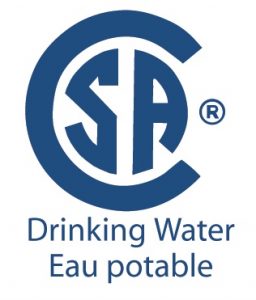
- Tested and certified by CSA International to CSA B483.1, to NSF/ANSI 61 and to NSF/ANSI 372 for low lead
- Independently tested for UV dose
WARRANTY
- 7-year limited warranty
-
Click to download PDF
- Product Brochure : R519 R830 R1245 UV System English
- Product Manual : R519_R830_R830F UV manual English & French
- Product Manual for R1245 UV System : Rainfresh R1245 UV Manual (English)
-
A) UNDERSTANDING UV SYSTEMS
Q What does the Rainfresh UV System do? Will it clean up my water?
UV systems disinfect water by inactivating bacteria, coliform (such as E. coli), viruses etc. UVC light at a wavelength of 254nm disrupts the DNA of microorganisms preventing them from multiplying. This makes water safe to drink from virtually any potable source.
Q How does the Rainfresh UV system work?
The Rainfresh UV system consists of a low-pressure UV lamp enclosed in a transparent quartz dome, housed in a stainless steel disinfection chamber. As untreated water enters the chamber from one end, microorganisms like bacteria, viruses, cysts etc in the water are exposed to ultraviolet light being emitted by the UV lamp. The UV light kills/inactivates these microorganisms instantaneously and treated water flows out of the chamber and is ready for consumption.
Q) Does a UV system add anything to the water?
Rainfresh UV systems use chemical-free and environmentally responsible technology that does not require use of any chemicals. UV systems do not alter the water quality, other than disinfection.
Q) Can I drink the water after it has been treated by a UV.
Yes the UV system will make the water safe to drink from a microbiological safety point. You no longer will need to buy bottles and jugs to have safe drinking water in your home.
Please note that UV system only kills/inactivates microbes. It does not change water hardness, remove iron or change water taste and odour. It is designed specifically for only one purpose which is to make water safe to drink.
B) INSTALLATION, SIZING QUESTIONS
Q Can I install a UV system if I am on well, lake, cistern or river water?
Yes. Rainfresh UV systems are designed to be used on water from any source. However, tannin, organic colour etc can significantly reduce the efficiency of the UV system and may require additional pre-treatment. Send us a sample of your water (see link at the bottom of the page) for a free water quality report.
Q What kind of water quality is required for the UV system to work efficiently?
The unit should only be operated with water that meets the following minimum criteria:
- Turbidity/Suspended Solids: Water should not have any dirt as microbes hide behind dirt particles and get shielded from UV light. Therefore water should have turbidity of less than 1 NTU (Nephelometric Turbidity Unit). This can be achieved by installing a 5 micron sediment filter before water enters the UV. We recommend Rainfresh Model FC150 or FC100 (5 micron sediment filter and housing assembly) or high flow filter housings (BH010 or BH020). If the water has abnormally high turbidity, a back-washable multi-media filter is recommended.
- Hardness: Less than 7 gpg (120 mg/L). Hard water causes scale build-up on the quartz sleeves thereby reducing the UV transmittance in the water and in turn reduced performance. For high hardness water, a water softener should be installed prior to the UV system.
- Iron & Manganese: Iron less than 0.3 PPM (mg/L) and Manganese (less than 0.05 mg/L) is desirable. At higher concentrations, a suitable water conditioner (e.g a greensand filter) should be installed prior to the UV system to prevent iron build-up on the quartz dome.
- Tannins and Colour: Water with tannins or colour has low UV transmissivity that reduces UV system performance. A tannin-removal / colour-removal activated carbon system should be installed to improve UV performance.
Q How do I know what my water quality is?
You can send a sample of your water to our test lab for a no-charge analysis of your water. The link to details on how to send the sample is at the bottom of the UV information page. Our lab can test for hardness, iron, UV transmissivity, pH, Turbidity and Total Dissolved Solids
Q If I find that I need additional treatment such as softener or tannin filter, where can I buy that?
You can buy these at various retail outlets such as Home Hardware, Lowe’s etc or order some of these systems directly from Rainfresh. Click on the “online store” link at the top of the page to order direct
Q Is a sediment filter necessary before the UV?
Yes. Regardless of your water quality, a 5 micron sediment filter should be installed before a UV system
Q Can I install the UV before the pressure tank?
No. UV systems should always be installed as the LAST stage before water gets divided into hot and cold. Never install a UV before any storage tank.
Q Can I install the UV horizontally?
Although we do not generally recommend horizontal installation, it can be done if there is no other way. There are 2 limitations with horizontal installation. First, it is not easy to drain the unit to winterize it and secondly you will have to be more careful when removing the dome for cleaning as chances of breaking it are greater (broken domes are not under warranty).
Q Should the UV be installed before, or after, a water conditioner?
UV should be the last stage of treatment. It should always be AFTER any water conditioners.
Q How do I know what size/model of UV unit to buy?
There are 3 Rainfresh UV models.
R519 – 5 US GPM (19 litres per minute)R830 – 8 US GPM (30 litres per minute)R1245 – 12 US GPM (45 litres per minute)All models are based on the max water flow at which the UV system can disinfect the water. While water flow rate depends on your pump capacity and pipe size, as a rule of thumb, you can select the UV system based on the number of bathrooms as follows
Number of Bathrooms in Your Home 1-2 2-3.5 3.5 or more UV Model R519 R830 R1245 To make sure that the water flow rate never exceeds the rated flow of the UV unit, you can purchase Rainfresh flow control kits that can be easily attached inline before the UV without solder. Please contact customer service for these flow control kits.
Q Does a UV light consume a lot of energy?
No, a UV system consumes only 28 – 95 Watt, depending upon the model. This is as much or less than a 60W bulb.Q Does the UV light stay ON all the time? Can I not turn it OFF when I don’t need water?
Yes the UV light stays ON all the time, even when you don’t need the water (e.g. during the night). Repeated ON/OFF actually shortens the UV lamp life. However, if you are going away from the house for a week or so, you can turn the UV system OFF. In this case first turn OFF the supply valve before the UV and then turn the UV off. Upon return, first turn the UV system ON, wait for about 10 minutes and then flush the water for a few minutes prior to consumption
Q Do I need a surge protector for my UV system?
Yes. You should never install the UV without a surge protector. A CSA or UL certified surge protector rated for a clamping voltage of less than 400 Volts, response time of less than one nanosecond, and energy absorption of at least 1,000 Joules.
Q Can I plug in the UV on the same circuit as my pump?
You should never install the UV on the same circuit which runs a pump or any kind of motor as that can destroy the ballast. The UV should be installed on a dedicated circuit only.
C) MAINTENANCE QUESTIONS
Q Do I have to replace the UV lamp? Why?
The UV lamp degrades over time and after 9000 hours (approx 1 year) of use, its killing ability drops to levels that are considered unsafe. Therefore the UV lamp must be replaced once a year even though the UV lamp continues to lights up.
Q Can I use any generic UV lamp with the Rainfresh UV system?
Use only GENUINE RAINFRESH UV Lamps with your UV system. Rainfresh UV lamps are designed with extensive product research and engineering to provide reliable and consistent UV output and performance that ensures the safety of your drinking water. Using non-Rainfresh UV lamps can not only compromise the system performance but also voids the electrical and CSA certification on the product and may result in any one or more of the following issues:
- Unsafe drinking water • Ballast failure • Electrical fire
Use of non Rainfresh lamps will void warranty & product certification
Q How do I know when to replace the lamp?
Rainfresh UV systems now feature a digital display that always shows the number of days left until the lamp is to be replaced. When the lamp is new, it shows 365 and then counts down to zero. At this point the display will show“A3” with red LED on and ballast beeps every 5 seconds, it indicates that the lamp has expired. Do not consume water until lamp is replaced. You can silence the alarm for 1 week three times to allow yourself time to purchase and install a new lamp. After that, the alarm cannot be shut off until the lamp is replaced.
Q Is there any other maintenance that is required?
You should routinely check the quartz dome and clean if scale has formed. The dome should also be replaced every 3 years. Also replace sediment filters regularly.
You should also replace the dome “O” rings whenever you replace the bulb (included with replacement UV bulbs).
Q Is there a need for me to test the water for bacteria now that I have a UV installed?
It is recommended that you continue to monitor your water safety through regular testing at least 2-3 times a year, even though you have a UV system.
D) MISCELLANEOUS QUESTIONS
Q Are Rainfresh UV systems tested?
Rainfresh residential UV systems are tested and certified by CSA Group to CSA B483.1 and NSF/ANSI 61 for material safety and structural integrity. They are also independently tested for microbiological inactivation and tested to deliver > 40mJ/cm2 UV dose. This is higher than most other UV systems that rate their “kill dose” at only 30 mJ/cm2 or even less.
Have more questions? Enter you own question below and our customer service will get back to you within 24 hours.
-
Rainfresh UV parts and accessories can be ordered online at www.rainfreshstore.ca. Items are shipped within 1 business day.
-
UV water purification systems made by Rainfresh will make your water safe to drink by killing/inactivating disease-causing bacteria, parasites and cysts. If your water comes from a private well or lake and you worry about the microbiological safety of the water, Rainfresh UV system could be the solution that you have been looking for.
Rainfresh UV disinfects water by using the natural, non-chemical disinfection properties of ultraviolet light (UV for short). UV light inactivates bacteria, coliform bacteria (e.g. E. coli), viruses, parasitic cysts and other microorganisms using a germicidal wavelength of 254 nm & a UV dose of >40 mJ/cm², making the water safe to drink from virtually any potable source.
UV disinfection is used by many municipalities across the world including North America for primary disinfection of water. It has multiple advantages over conventional chemical disinfection methods, such as:
- UV water purification systems are highly effective against a broad range of microorganisms including bacteria, viruses & parasitic cysts such as Cryptosporidium & Giardia
- UV water purification systems do not alter the water chemistry and thus there is no affect on taste, odour or colour of the water
- UV water purification systems do not create disinfection byproducts such as Trihalomethanes (THMs ) which are suspected carcinogens.
- UV water purification systems are easy to operate and require very little maintenance as compared to chemical disinfection methods
Rainfresh UV purifier systems are manufactured to the highest performance and quality standards.
Rainfresh UV systems are the best UV purification systems in Canada.
BENEFITS
- Makes ALL the water in the home safe to drink including bathrooms and showers
- Natural non-chemical method of treatment so you don’t have to deal with chemicals
- Very little maintenance required
- Can be used on any water source such as well, lake, river or even municipally treated (see feed water quality specifications below)
FEATURES
Rainfresh UV system is ideal for homes and cottages and available in 3 sizes – 5 US GPM, 8 US GPM & 12 US GPM to suit homes of various sizes
- All models independently tested for > 40 mJ/cm2 UV dose at end of lamp life (NSF/ANSI 55A dose requirement) at rated flow
- Audible alarm and visual LED lamp expiry indicator (with 7-day override feature) to show end of lamp life – 9000 hrs of use (approx 1 year)
- High quality stainless steel chamber
- High output UV lamps specifically designed and engineered for high disinfection performance
Click here to buy UV lamps and domes
-
Reviews
Add a review Cancel reply


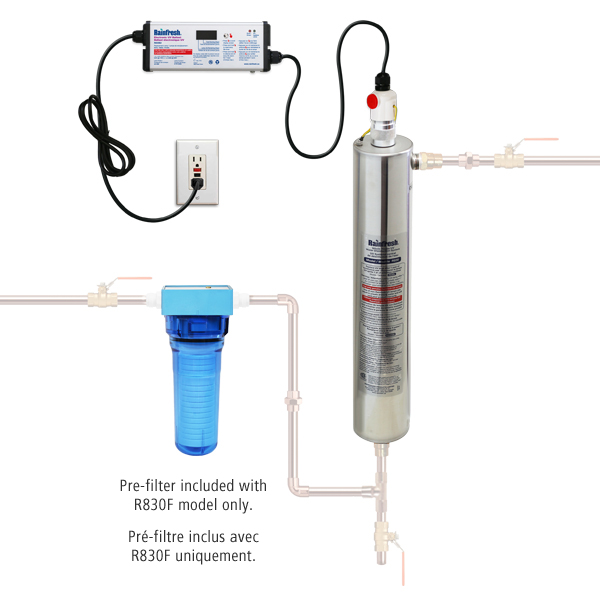
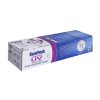
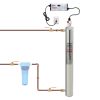
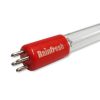
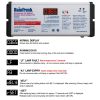

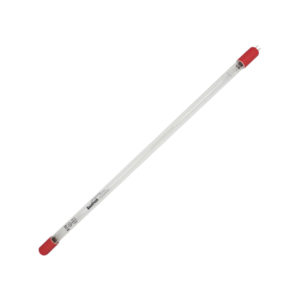
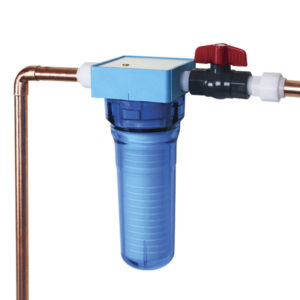
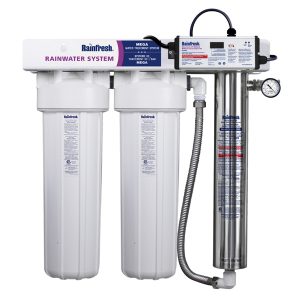
The install is pretty straightforward, but you do need a lot of vertical space (to get the lamp in and out). We live next to a farm and this baby keeps our water E. coli free. The replacement bulbs are a bit pricey but we think it’s worth it.
I’ve had this thing installed for 2 years and it’s working like a champ. Replacement bulbs are about 100.00 but for a yearly expense its not too bad. Install was not as advertised it took a lot of rigging, planning, re-configuring etc to get it setup the way I wanted with the shut off valves where I wanted them. Installation time will vary greatly depending on your house setup. I had to re-route my feed line from my well to an unused closet so I’d have somewhere easily accessible to maintain the system. All in all its an excellent product. Once its installed it just works, change the bulb, clean the tube and you can have healthy bacteria free water!
Mar 16, 2014
Overall a good system but the replacement bulbs are a bit expensive and never seem to go on sale!
This filter does exactly what you would expect – delivers sterile drinking water. The manufacturing quality of the kit is pretty good. There are no sharp edges, and finish is durable. What is not clear from the description is that: – the kit does not include fittings – also need to purchase a AC surge filter to protect the lamp The 60-70 minute installation time is only applicable is you are skilled at soldering or using plastic tubing, and have easy access. Assembly considerations: – you need 4 feet of vertical space in order to change the lamp. Lamps are recommended to be replaced annually and cost about $80. There is a timer built into the ballast that has an audio alarm when time is up. There is a 7 day override, which gives time to buy an new bulb. This took our total coliform count from >80 to 0.
Customer from Ottawa, Ontario on Aug 30, 2008
Tout est parfait. Le puits était positif en coliformes. Après une chlorination et l’installation du système rainfresh, le puits est ressorti négatif après analyse par un laboratoire provincial.
Installation de 3 heures par moi-même qui est un bricoleur. La boîte est complète, il ne manque que les fittings et vous décidez si vous y allez avec du 3/4 ou 1/2 comme entrée principale.
Pour l’électricité, j’ai acheté un APC Back-ups comme pour les ordinateurs afin de contrôler et réguler le wattage tout en ayant de l’électricité en cas de panne. Pour un débutant et bien je m’aimes!
N’oubliez pas d’installer votre ligne de déviation en cas de bris de lampe ou de maintenance.
Merci!
Everything is perfect. The well was positive in coliforms. After chlorination and installation of the rainfresh system, the well emerged negative after analysis by a provincial laboratory. Installation of 3 hours by myself who is a handyman. The box is complete, it only needs fittings and you decide if you go with 3/4 or 1/2 as the main entrance. For electricity, I bought an APC Back-ups as for computers to control and regulate the wattage while having electricity in case of breakdown. For a beginner and well I love myself! Do not forget to install your bypass line in case of lamp breakage or maintenance.
Thank you!
Richard D
Easy to install but I’m really disappointed as the UV system heats “cold” water up to 30/40 degrees Celsius. I need to let the water run for 2 to 3 minutes every time I want cold water. I wrote to Rainfresh and it is supposed to be normal. They said I just had to flush the toilet to get fresh water…. annoying.